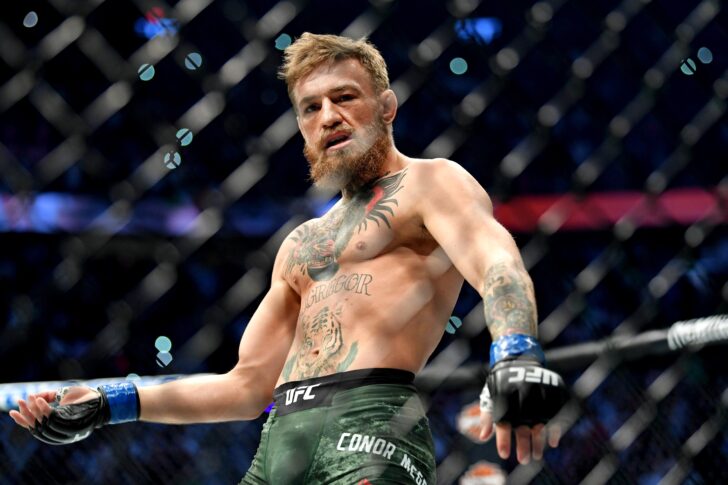So, it’s 2020 and you’re a new fan to MMA.
Over the past quarter century, mixed martial arts has gone from being an obscure counter-culture spectacle that was only available live in-person in a select few states, pay-per-view, and by replay on VHS tapes to being streamed to millions worldwide on a platform such as ESPN+, which is owned by Disney.
Maybe you’ve taken an interest in the sport because you were scrolling through the channels on a Thursday, Friday, or Saturday night and happen to come across the broadcast of a UFC, PFL, LFA, or Combate Americas card and you took a liking.
Maybe you have become a fan because of a particular fighter who has crossed the mainstream threshold of popularity like a Conor McGregor or Jorge Masvidal.
Either way, consider this a comprehensive breakdown of what you need to know so that you can better understand this ever-growing and continuously evolving sport.
Vocabulary
Let’s start with some basic terminology so that you can better understand what you are seeing and more effectively communicate with other fight fans.
- Strike: punch, kick, elbow, knee
- Knockout or KO: when a contest is stopped due to when one fighter renders their opponent unconscious by a strike (exception: slams)
- Technical Knockout or TKO: when a contest is stopped by a referee after their judgment determines one fighter is no longer intelligently defending themselves
- Decision: when a bout reaches the end of its scheduled time allotment and the winner is then determined by the three judges sitting cageside
- Unanimous Decision: the official ruling when all three judges score the card the same way
- Split Decision: the official decision when two of the three judges score the card the same way
- Draw: the official decision when the fight is scored evenly and determined to be a tie
- Grappling: when a fighter tries to control their opponent by grabbing and holding them
- Submission: when a fighter taps his hand repeatedly signaling they quit. This can come from a joint lock, choke, or to strikes. A verbal submission can also be given by a fighter conceding defeat
- Technical Submission: when a fighter gets choked unconscious or the referee observes a bone break in a submission
- Neutral Position: every round starts in neutral position, meaning that each fighter is standing up on their feet
- Clinch: when fighters are standing and grappling each other. There are many variations to clinching and a variety of ways fighters can do devastating damage in this position
- Takedown: the act of when one fighter take the opponent to the ground
- Scramble: when both fighters are on the ground in transition with neither fighter having established dominant position
- Guard: one of the most basic terms in ground fighting. There are many different variations to the guard such as full, half, side, spider, and rubber among others.
- Mount: when on the ground and one fighter is on top their opponent with their legs up past the grounded opponents
Origin
Now, technically speaking, there have been battles of mixed styles dating all the way back to the original Olympics, however what we have come to know MMA as today (originally referred to as “No Holds Barred”) started in 1993 in Denver, Colo., for UFC 1.
There have been a variety of combat sports promotions that predated the UFC, such as Vale Tudo and Pancrase, but no one cemented themselves to the masses the way that Art Davie and the Gracie family was able to when they created the UFC. There are hundreds, if not thousands of MMA promotions in the world, but the gold standard has become synonymous with the UFC.
Rules and Regulations
One thing is typically a tough concept for new fans to wrap their heads around is the commissions. In baseball or football, the MLB and NFL regulates the competition, whereas in MMA, a commission appointed by each state is the regulating authority. A common misconception is that a promotion such as the UFC hires the referees and judges, when, in fact, this is something that is handled by the commission.
The commission administers weigh-ins, rule sets, replays (only legal in certain states), in-contest use of medical staff, penalties, and fines.
As mentioned, rule sets are administered by state commissions, which adds to the confusion because the rules can differ from state to state, as well as promotion to promotion. For example, PFL does not allow elbow strikes. Why? PFL follows a scheduling format of a regular season and playoffs, which keeps the timeline in between fights relatively short. Elbows happen to be a strike with a higher probability of drawing blood than other forms of striking, so the recovery period on a nasty cut would basically eliminate a fighter from the PFL tournament altogether.
Let’s talk about bout scheduling in professional fights versus amateur. Professional fights are typically three, five-minute rounds and amateur (or elimination) bouts are three, three-minute rounds. The notable exception here is that in most major promotions, a title fight is scheduled for five, five-minute rounds. In the UFC, the main event of a Fight Night on ESPN card follows this as well. Why is the term “scheduled for” noteworthy? It’s simple. It’s because a fight can end prior to the designated time allotment by stoppage due to knockout, submission, or doctor’s stoppage.
Scoring
To transition from rules and regulations, let’s jump into scoring. This is yet another part of the sport that has the potential to vary based on the location of the event. In general, MMA follows a 10-point must system, similar to that of what is used in boxing. Each judge individually scores the fight using a criteria based on the effectiveness and efficiency of both striking and grappling, cage control, and aggressiveness.
Unless there is a point deduction for a penalty, the winner of a round will receive 10 points on a scorecard and the opponent receives 9 points. However, in some states, judges can elect to only score 8 points to the loser of a round if they were dominated and/or close to finished.
Weight Classes
Once upon a time, there was one giant open class that housed all competitors and it was not out of the ordinary to see someone like Royce Gracie (6’1” 175 lbs.) fight someone like Kimo Leopoldo (6’3” 250 lbs.).
Today, there are 12 weight classes recognized by the UFC. There are other weight classes that do exist such as superheavyweight and atomweight, there is just not a large share recognition going to those divisions here in the US.
Let’s take a look at the weight classes:
- Flyweight: up to 125 lbs
- Bantamweight: up to 135 lbs
- Featherweight: up to 145 lbs
- Lightweight: up to 155 lbs
- Welterweight: up to 170 lbs
- Middleweight: up to 185 pounds
- Light Heavyweight: up to 205 lbs
- Heavyweight: up to 265 lbs
- Women’s Strawweight: up to 115 lbs
- Women’s Flyweight: up to 125 lbs
- Women’s Bantamweight: up to 135 lbs
- Women’s Featherweight: up to 145
What’s available and how can you watch it?
We’ve mentioned how you can see the UFC, but let’s talk about a few of the other promotions. The following promotions listed are going to range from large promotions with a global footprint, all the way down to some of the promotions one may see here locally in Colorado.
- Bellator MMA: widely considered as the closest direct competition to the UFC, Bellator can be streamed on the DAZN app platform
- Professional Fighters League (PFL): PFL is a unique organization based off of the regular season/playoffs model that they use. The winner of each season wins a $1 Million prize. PFL can be found on ESPN and can be streamed on demand with ESPN+
- Legacy Fighting Alliance (LFA): do you like picking up on something big way before anyone else does? Then LFA is definitely a promotion to tune in for. They are the largest feeder organization (think along the lines of minor leagues) for the UFC and their events can be streamed on UFC Fight Pass
- Fury Fighting Championship: Fury is considered a regional promotion that is on the come-up. 2019 marked the first time that Fury held a card in Colorado and they look to return again in 2020
- Colorado Combat Club (C3): Colorado Combat Club is the fastest rising promotion in the state. The first C3 card of the year will be taking place on Feb. 29 down in Pueblo, Colo.
- No Mercy Extreme Fighting (NMEF): NMEF is the longest running promotion in Colorado with shows dating back to 2007. The Colorado Springs based outfit typically holds their events in southern Colorado where they aim to showcase fighters local to that area
- Sparta Combat League (SCL): SCL has the largest digital presence out of any of the local promotions with a variety of media services including a $15/monthly membership package with discounted tickets and four vouchers for pay-per-view events. They kick the year off for Colorado cards with the first event taking place on Jan. 24 at the Jefferson County Fairgrounds
Hopefully, this brief breakdown of MMA helps serve as a reference guide to new fans of the sport in 2020.
-Jordan Kurtz is a founding member of Comments From The Peanut Gallery and can be followed on Instagram at @CommentsFromThePeanutGallery



